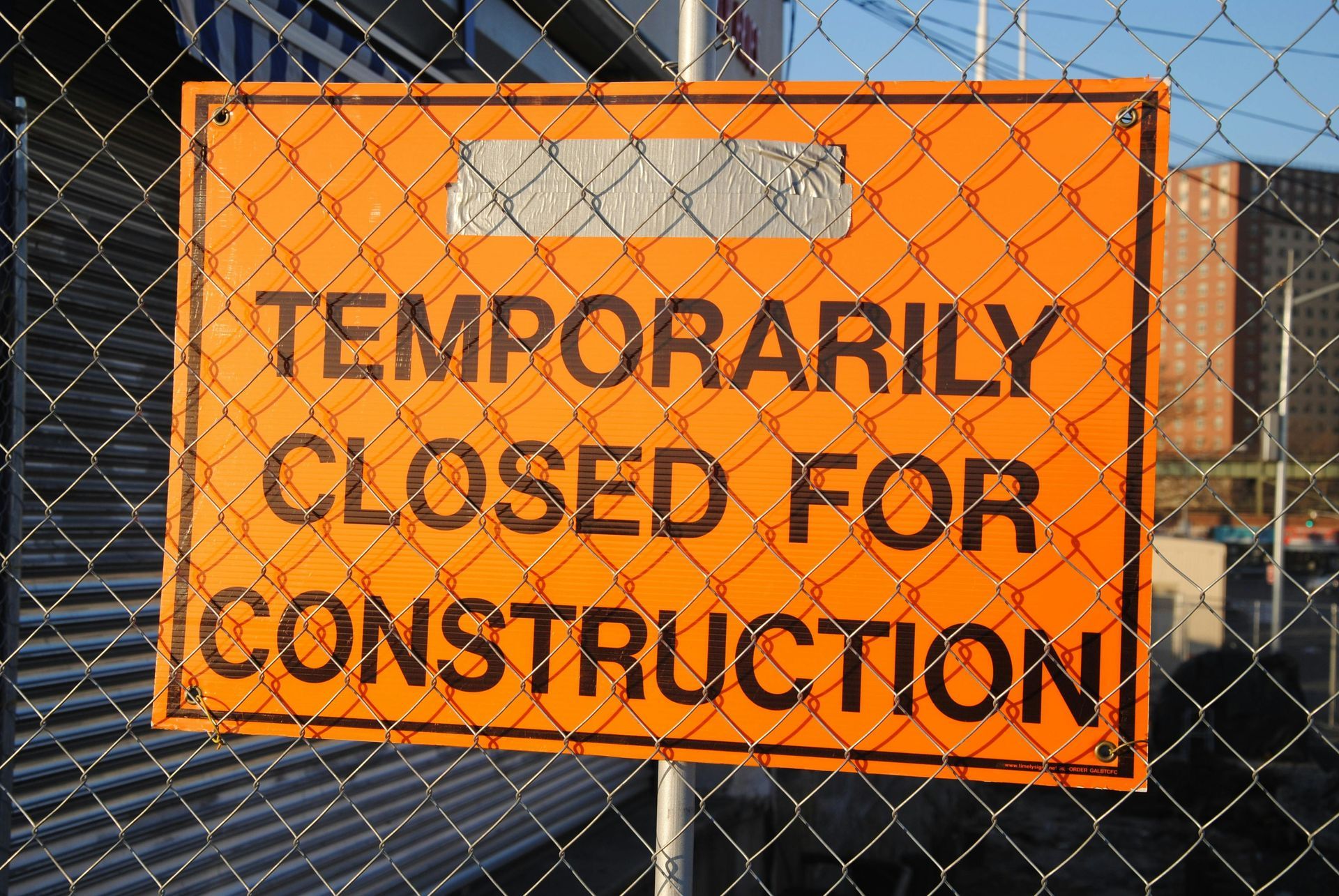The Other Side Of The Shovel

When you're planning construction projects or even simple landscaping work, it’s crucial to know what lies beneath the ground. From gas lines to electrical wiring, the underground utility infrastructure can be a complex and potentially hazardous network. This is where utility locators come in. But what’s the difference between private and public utility locators, and why does it matter? What Are Utility Locators? Utility locators are professionals or services that identify the location of utility lines, including water, gas, electricity, telecommunications, and sewer lines, beneath the surface. Whether you’re working on a construction site, digging a trench, or planning a new development, knowing the precise location of these utilities is essential for safety and to avoid costly damages. There are two main types of utility locators: public and private . Let’s explore each one and how they differ. Public Utility Locator A public utility locator is typically associated with utilities that are provided by government or large municipal entities. These services are usually regulated and serve the public at large. Key Characteristics of Public Utility Locators: Coverage Area: Public utility locators are responsible for identifying utilities that fall under the jurisdiction of local, state, or federal governments. These typically include: Water mains Natural gas lines Sewer lines Electric power transmission lines Telecommunication lines (in some areas) Free Services: In many places, utility locating for public utilities is provided free of charge for homeowners and contractors. This is often a service funded by public taxes or utility companies. Regulation: Public utilities are often regulated by local or national authorities, ensuring a high level of safety and standards in the process of locating these utilities. Communication: Public utility locators generally work in coordination with 811, the national “Call Before You Dig” hotline in the United States, which connects you to a system for marking utility lines before digging. Contractors and property owners are advised to contact this number to request a utility locator to come and mark the utilities. Responsibilities: These services are primarily focused on ensuring the safety of workers and the public by preventing accidental damage to infrastructure that could result in hazardous conditions or service outages. Private Utility Locator Private utility locators deal with underground utility lines that are not publicly regulated or provided by governmental entities. These are typically privately owned infrastructure lines that exist on private property. Key Characteristics of Private Utility Locators: Coverage Area: Private utility locators focus on utility lines that are located on private property and are owned by private companies or individuals. These could include: Private water lines Private sewage systems Electrical wiring within a property boundary Private gas lines Fiber optic cables Paid Services: Unlike public utility locators, private utility locating is typically a paid service. Since private companies own these utilities, the cost of locating and marking these lines is often borne by the property owner or contractor needing the service. Specialized Equipment: Private utility locators may use more specialized tools and technology to identify private lines that may not be visible or easily traceable. Some private utilities, like internal plumbing systems or irrigation systems, may not be documented in public records. Flexibility: Private utility locators can often be more flexible in scheduling and service offerings since they are not restricted by government regulations and can cater to specific project needs. Non-Regulated: These utilities are not subject to the same level of regulation as public utilities, which means it’s up to private companies or property owners to ensure the safety and integrity of their utility systems. Key Differences Between Public and Private Utility Locators Feature Public Utility Locator Private Utility Locator Ownership Utilities owned by government or municipalities Utilities owned by private entities or individuals Examples Water, sewer, electricity, gas in public systems Private water pipes, irrigation, private gas lines Service Cost Typically free (often covered by taxes) Typically paid (service fee applies) Regulation Highly regulated and safety-focused Less regulated; focused on private needs Responsibilities Ensures safety for public infrastructure Ensures safety for private systems Utility Types Public infrastructure, large-scale systems Small-scale, private systems like homes or businesses Access to Information Public records or government databases Requires specialized tools, not always documented in public records Why Does It Matter? Understanding the difference between public and private utility locators is essential for ensuring safety and efficiency during construction, landscaping, or maintenance projects. Failing to properly locate utilities can result in: Property Damage: Damaging underground lines can cause costly repairs or service disruptions. Safety Hazards: Hitting a gas line or electrical wire can lead to dangerous fires, explosions, or electrocution. Legal Consequences: Property owners and contractors can be liable for accidents if utilities are damaged due to negligence in locating them. In some regions, the responsibility for locating private utilities may fall on the property owner, which is why it’s important to understand the boundaries of where public utility responsibilities end and where private utility locating begins. Conclusion When planning to dig or excavate, it’s vital to identify and understand the types of utility lines you might encounter. Public utility locators serve to protect large-scale, governmental systems, while private utility locators focus on smaller-scale, privately owned systems. Both play essential roles in keeping the public and private sectors safe, ensuring that projects go off without a hitch. Always remember to call a utility locator service before you dig to avoid unwanted surprises!

Private utility damage is a critical issue affecting both industries and local communities. Whether it involves gas lines, water systems, electrical wiring, or telecommunication cables, damage to these essential services can have far-reaching consequences. This blog post delves into the statistics surrounding private utility damage, examining causes, impacts, and how to mitigate these incidents. What is Private Utility Damage? Private utility damage occurs when underground or overhead infrastructure, such as gas, water, electricity, or telecommunication lines, is accidentally struck, damaged, or disrupted during construction or maintenance work. It can also result from natural disasters or improper maintenance. These damages can lead to service interruptions, costly repairs, environmental harm, and even safety hazards. Key Statistics on Private Utility Damage While private utility damage is not always reported in a centralized way, several studies and industry reports have provided insight into the scope of the issue. The most frequently cited statistics include: Frequency of Utility Strikes According to the Common Ground Alliance (CGA), in the United States, a utility line is damaged every 6 minutes on average due to accidental strikes. This includes both public and private utility systems. A 2020 report by the CGA found that over 400,000 utility damages occurred in the U.S. annually, highlighting the prevalence of this issue across various sectors. Causes of Utility Damage The primary causes of private utility damage include: Excavation activities : This accounts for nearly 40% of all reported utility damages, where equipment like backhoes, trenchers, and augers inadvertently strike buried cables or pipelines. Lack of proper marking : Around 25% of utility strikes occur because the utility lines were not adequately marked by utility companies or contractors. Improper digging practices : About 20% of damages happen when workers fail to follow required digging protocols. Financial Impact of Utility Strikes The economic impact of utility damage is significant. According to CGA's 2020 report, utility strikes cost the U.S. economy over $30 billion annually in damages, repair costs, and service downtime. Repairing damage to utilities is costly, with average damage repair costs ranging from $1,000 to $100,000 depending on the severity and type of utility. Safety Risks and Hazards Damage to private utilities, especially gas and electrical lines, poses serious safety hazards. For instance, gas line ruptures can result in dangerous explosions or fires. In 2021 alone, there were 88 reported incidents of gas line strikes that led to injuries or fatalities. Electrical line damage can cause electrocution risks or service outages, impacting both households and businesses. Waterline damage can lead to environmental contamination, flooding, and widespread property damage. Impact on Service Providers and Customers Utility damage not only affects private companies and municipalities but also impacts customers who rely on these services. When utilities are disrupted, households may experience power outages, water shortages, and communication difficulties. A single instance of private utility damage can result in service disruptions for hundreds, sometimes thousands, of customers, depending on the utility’s scope and location. Addressing the Issue: Prevention and Solutions To reduce the frequency and impact of private utility damage, several steps can be taken: Use of Technology : One of the most effective ways to prevent accidental strikes is through the use of advanced detection technologies like ground-penetrating radar (GPR) and locating devices . These tools allow workers to identify the precise location of utilities before digging begins. Proper Training and Awareness : Ensuring that construction workers, contractors, and others who work near utilities are well-trained in proper digging procedures and the importance of utility marking is essential. Regular education and certification programs can significantly reduce the risk of accidental strikes. Calling 811 Before Digging : In the United States, it is a legal requirement to contact the 811 utility locator service before starting any digging project. This service helps mark the location of underground utilities to ensure they are avoided. Stronger Regulations and Penalties : Governments and regulatory bodies need to enforce stricter regulations and penalties for those who fail to follow proper procedures or damage utilities. This can help encourage better practices across the board. Conclusion Private utility damage is a pressing issue that affects the safety, economy, and well-being of both individuals and industries. By understanding the scope of the problem through key statistics and taking steps to prevent damage, we can protect infrastructure, reduce costs, and safeguard public safety. Prevention is the most effective solution—whether it’s through advanced technology, education, or adhering to regulations like 811. Ultimately, a combination of careful planning, awareness, and responsibility is key to reducing the risks of utility damage and maintaining essential services for everyone.
